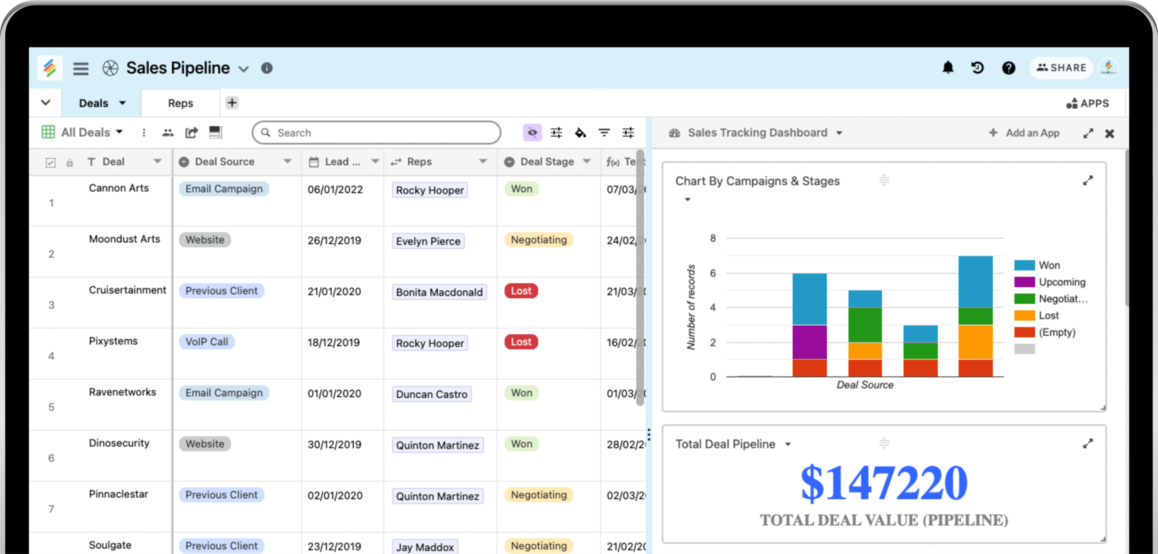Create Open Platform Databases Easily with the Best No-Code Tools Available
Create Open Platform Databases Easily with the Best No-Code Tools Available
Blog Article
A Comprehensive Guide to Carrying Out Scalable Databases Without the Need for Coding Proficiency
In the contemporary landscape of data administration, the capability to carry out scalable data sources without coding proficiency is becoming progressively necessary for companies of all dimensions. This overview intends to illuminate the process, focusing on easy to use tools and intuitive interfaces that demystify data source arrangement. By examining crucial attributes, reliable approaches for application, and finest methods for continuous administration, we will address just how also non-technical individuals can confidently browse this facility surface. What are the essential aspects that can really empower these customers to take advantage of scalable databases efficiently? The answers might redefine your technique to data monitoring.
Comprehending Scalable Databases
In the realm of modern data monitoring, scalable databases have actually emerged as a crucial option for organizations looking for to handle raising volumes of info efficiently. These databases are made to accommodate development by permitting the seamless addition of resources, whether via horizontal scaling (adding extra equipments) or vertical scaling (updating existing equipments) This versatility is crucial in today's fast-paced electronic landscape, where information is created at an unmatched price.
Scalable databases normally make use of distributed styles, which enable data to be spread throughout numerous nodes. This distribution not only improves efficiency yet also supplies redundancy, making certain information availability even in the event of equipment failings. Scalability can be an essential element for different applications, consisting of shopping systems, social media sites networks, and big data analytics, where individual need can rise and fall significantly.
Additionally, scalable databases typically include durable data consistency designs that balance performance and dependability. Organizations needs to consider their certain demands, such as read and create speeds, data honesty, and mistake resistance when choosing a scalable database option. Eventually, comprehending the underlying principles of scalable databases is important for companies aiming to thrive in a significantly data-driven world.
Key Features to Look For
When evaluating scalable data sources, numerous crucial functions are extremely important to making sure ideal performance and reliability. Take into consideration the design of the database. A dispersed style can enhance scalability by allowing information to be kept across numerous nodes, promoting smooth data access and handling as need boosts.
Another crucial attribute is information partitioning, which makes it possible for effective administration of large datasets by separating them into smaller sized, a lot more manageable items (no-code). This technique not only enhances efficiency but likewise simplifies source allocation
In addition, search for robust replication capabilities. This function ensures information redundancy and high availability, decreasing downtime during upkeep or unexpected failings.
Performance tracking devices are likewise important, as they give real-time insights right into system health and functional performance, permitting prompt adjustments to preserve optimum efficiency.

User-Friendly Database Tools
Simpleness is a critical component in the layout of straightforward database devices, as it improves accessibility for customers with varying levels of technological knowledge. no-code. These devices focus on intuitive user interfaces, allowing users to develop, manage, and query data sources without needing extensive programs knowledge
Trick functions generally consist of drag-and-drop capability, aesthetic information modeling, and pre-built themes that improve the arrangement process. Such devices typically offer led tutorials or onboarding processes that promote user involvement and reduce the discovering curve. Furthermore, seamless assimilation with prominent information resources and services makes sure that users can quickly import and export information, additionally simplifying operations.

In addition, durable support and area resources, such as discussion forums and documents, improve the user experience by giving help when needed. On the whole, easy to use database devices empower companies to harness the power of scalable databases, making information administration available to every person included.
Step-by-Step Implementation Overview
Exactly how can organizations successfully execute scalable data sources to meet their expanding data requirements? The process starts with recognizing particular information requirements, consisting of the volume, selection, and velocity of information that will be processed. Next, companies should examine user-friendly database devices that offer scalability functions, such as cloud-based options or managed data source solutions.
When the appropriate tool is chosen, the following step includes configuring the database environment. This includes establishing circumstances, defining individual approvals, and developing information frameworks that line up with company goals. Organizations should then move existing data right into the new system, guaranteeing data stability and minimal interruption to procedures.
Post-migration, performing detailed testing is important; this consists of efficiency screening under numerous load conditions to make sure the system can take care of future development - no-code. Additionally, it is essential to educate personnel on the data source administration interface to help with seamless usage
Finest Practices for Administration
Efficient administration of scalable data sources needs a critical strategy that focuses on recurring surveillance and optimization. To attain this, companies need to apply durable surveillance tools that offer real-time understandings into database performance metrics, such as query reaction times, resource utilization, and deal throughput. Consistently evaluating these metrics can help recognize bottlenecks and locations for improvement.

Routine back-ups and catastrophe recovery plans are essential to protect information honesty and Homepage schedule. Establishing a routine for examining these backups will guarantee a trustworthy recuperation procedure in instance of an unexpected failure.
In addition, efficiency adjusting must be a continuous process. Readjusting indexing methods, optimizing inquiries, and scaling resourcesâEUR" whether up and down or horizontallyâEUR" will certainly assist keep optimal efficiency as use demands advance.
Lastly, cultivating a culture of expertise sharing amongst team participants will allow continual knowing and adjustment, ensuring that the administration of scalable data sources continues to be effective and effective with time.
Conclusion
To conclude, the implementation of scalable databases can be successfully attained without coding proficiency with the application of easy to use devices and instinctive interfaces. By adhering to the laid out methods for setup, information movement, and performance testing, people can navigate the intricacies of database administration with simplicity. Highlighting finest techniques for recurring upkeep and cooperation further enhances the ability to manage scalable databases efficiently in a rapidly developing data-driven atmosphere.
In the contemporary landscape of data administration, the capability to apply scalable data sources without coding experience is ending up being significantly essential for organizations of all sizes.In the realm of modern data monitoring, scalable databases have arised as an essential solution for organizations seeking to handle increasing quantities of info successfully.In addition, scalable data sources usually include durable data uniformity versions that balance performance and reliability.How can organizations efficiently implement scalable data sources to satisfy their growing information requirements? Next, companies ought to assess user-friendly data source tools that offer scalability attributes, such as cloud-based options or managed data source services.
Report this page